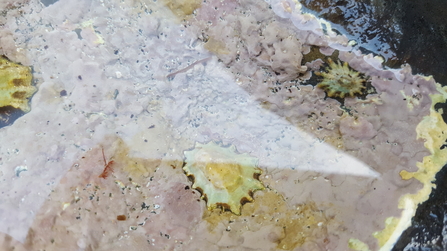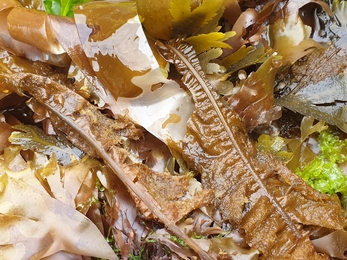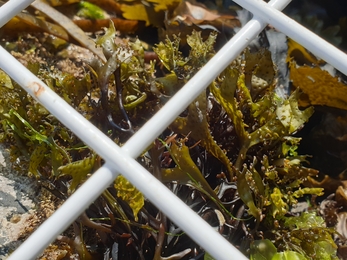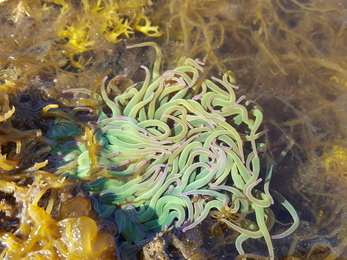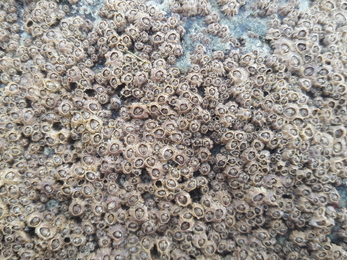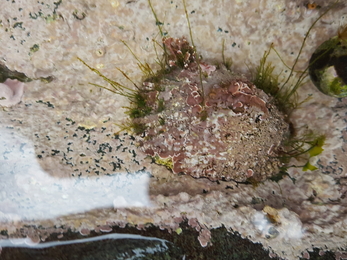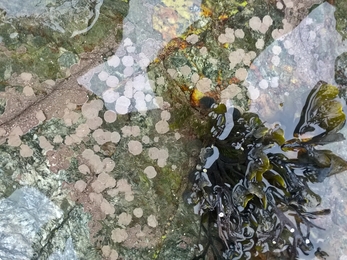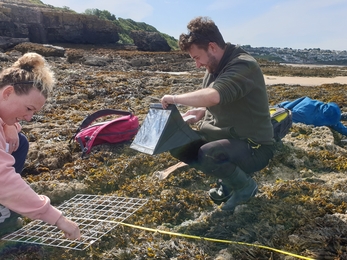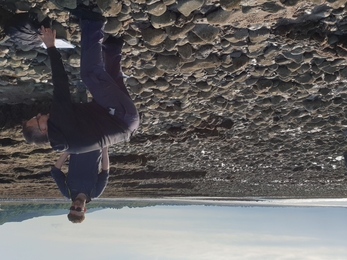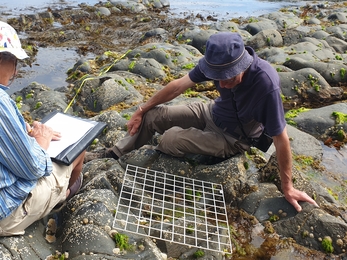The shore visited this month were Traeth Coch (Y Fenai a Bae Conwy/ Menai Strait and Conwy Bay SAC); Porth Meudwy (Glannau Aberdaron SSSI) and Llanddulas (Bae Lerpwl/Liverpool Bay SPA).
Surveys completed
Number of quadrats: 14; Number of volunteers: 8 (new attendees -2)
Walkover survey area covered: 632m2
Seasonal findings usually here we introduce something that’s linked to the season we’re in and that we’ve seen on shore. Since the Wildlife Trusts have joined with other environmental organisations in a UK-wide blue carbon mapping project which recently made the news we decided to concentrate on the overall change in Climate this month. Blue carbon is the carbon stored in various ways by our marine environment and which need protecting and enhancing to help us reach our 2030 target of Net Zero (a target which we actually need to reach beyond to carbon negative if we’re to have a chance of reducing many of the reported expected impacts). A pilot project has already helped to map the Blue carbon in parts of the North Sea and has found that the particular area of the North Sea studied held carbon stores equivalent to 20% of that stored in all the woodlands and forests in the UK, so it’s no lightweight. You can find out more about Natural solutions to Climate Change here.


